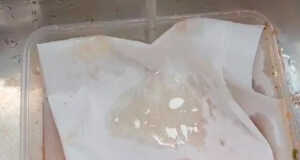While many of us have plants in our homes, that does not mean that we have the greenest of thumbs. Taking care of plants is hard! Indoor plants are hard to keep alive and our indoor gardens are always suffering. It’s a constant battle, that is for sure. One of the toughest parts of plant maintenance is keeping the edges of the leaves looking healthy and green.
Our leaves are always browning around the edges or turning yellow. It feels like these issues keep cropping up, no matter how hard we try. We struggle to figure out if we are watering them excessively or if we are not giving them enough to drink. These are the balancing acts that make it so hard to keep plants healthy. Are you experiencing the same sort of issues with your own plants?

If so, we have finally pinpointed the reason for our issues. Improper watering habits are keeping your plants from reaching their full potential. For starters, you’ll want to make sure that the pot you are keeping the plant in has the necessary drainage holes. Keep watering until you see water coming out of those holes. A lack of water will turn your leaves brown before you know it.
Leaves can also turn brown because the home lacks a certain amount of humidity. Houseplants tend to originate in warm, humid environments. When they are placed in a cool, dry home, this comes as a massive shock to them. Whether you decide to run a humidifier in close proximity to the plants or you would rather mist them every few days, each of these methods can achieve the desired results.

Have you done all of these things already but your leaves are still brown? Do not fret! You may be using softened water or giving them too much fertilizer. Plants do not like soft wate and if you live in a home with softened water, you will want to give your plants distilled water instead. Leaves that are especially brown may require some additional steps, though.
In these instances, the leaf could need to be trimmed back. From there, you can simply wait for it to grow back. When the browning is minimal, follow the leaf’s natural curvature and trim off the section that has become damaged. These tips are as crucial as they are simple and we hope that you have the best of luck implementing them. Be sure to pass this one along to the wannabe green thumbs in your life!










